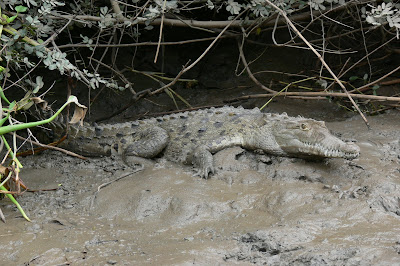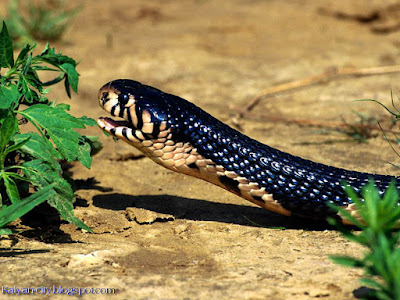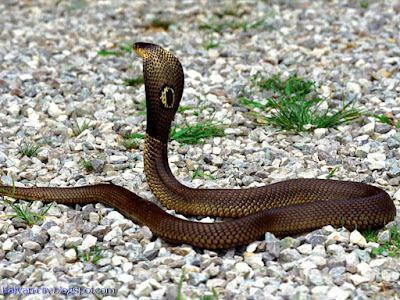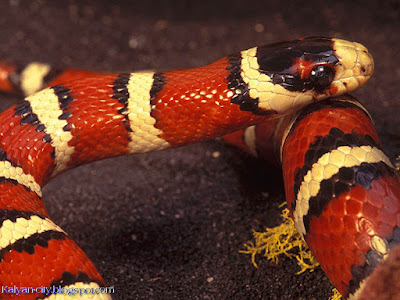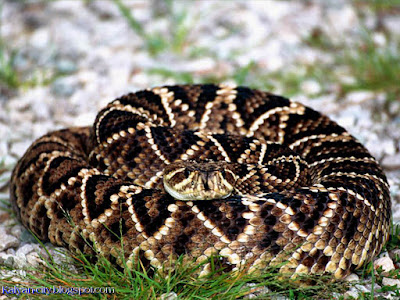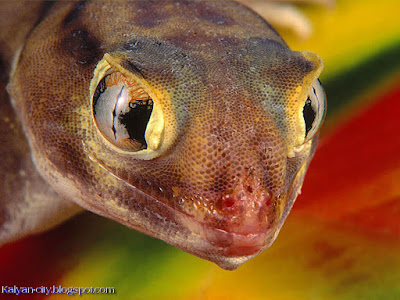 Barely a week into 2010 and already the crazy crocodile stories are starting to appear. This one concerns the possible decline of freshwater crocodiles at the hands of expanding saltwater crocodile populations. The story itself is clearly prompted by the release of the revised management plan which contains a graph showing the apparent decline in freshwater crocodiles detected during surveys of the Daly River.
Barely a week into 2010 and already the crazy crocodile stories are starting to appear. This one concerns the possible decline of freshwater crocodiles at the hands of expanding saltwater crocodile populations. The story itself is clearly prompted by the release of the revised management plan which contains a graph showing the apparent decline in freshwater crocodiles detected during surveys of the Daly River.I'm not sure that I'd be leaping to such conclusions based on the findings of one river system's survey results just yet, especially considering the variability inherent in survey results. There's no information in the report, for example, to assess the impact that changing the survey methodology in 1998 (the first year of the apparent decline) had on the results. It's a good point to bear in mind when assessing croc survey data.
But I digress. Let's say that the decline is real (and I suspect it probably is). The news article implies that this is a real problem for freshwater crocodiles, with one noted expert even suggesting that freshwater crocodiles might be "on the way out". That sounds pretty dramatic! However, I think the point is being missed because there's a very reasonable explanation behind it. When saltwater crocodile populations were protected in 1971 (in the Northern Territory) there were only a few thousand left hiding in backwater swamps and creeks. Early crocodile surveys conducted by Harry Messel from the University of Sydney found that freshwater crocodiles had moved a long way downstream. There were even some freshwater crocs found in estuarine areas. This told us two things: first, that "freshwater" crocodiles are much more tolerant of saline water than their name implies, and secondly that freshwater crocodile populations are largely restricted to upstream areas by saltwater crocodiles. Take those saltwater crocodiles away, and freshies are free to move a lot further downstream.
You can probably see where this is going. Since saltwater crocodiles have recovered in the last few decades, they have progressively reclaimed territory that was formerly "theirs". Freshwater crocodiles have been pushed back into their more usual haunts: upstream freshwater and low escarpment habitat. So it's really not surprising to find that in the last decade, this trend has continued with densities declining in more downstream areas as saltwater crocodile populations mature and their size demographic becomes increasingly biased towards larger adults. Suddenly those Daly River results don't seem so surprising.
In straightforward terms, freshies have had it too good for too long! If there's one thing we know about crocodiles, it's that they are opportunists. We know they're happy to disregard notions of territory if there's plenty of food around, and we know that most species will range into less suitable habitat even if it means not growing so quickly or being able to breed. Being long-lived gives you a bit of flexibility with such things. Species are also frequently sympatric (sharing the same habitat) in areas where there's plenty of food and space. The Daly River is one example, but there are plenty of others where it would be very informative to see if similar trends exist. Unfortunately freshwater crocodiles haven't really been a management priority in the last decade and a lot of these trends have been lost. Perhaps the decline in the Daly River reflects a reduction in available food for both species? It certainly warrants further investigation.
These dynamic interactions between saltwater and freshwater crocodiles make even more sense when you consider recent fossil evidence showing that freshies very likely evolved from salties. Resources and habitat partitioning led to speciation in the ancestors of saltwater crocodiles, and freshwater crocodiles became perhaps better suited to the more extreme habitat conditions where food and nesting resources are less readily available. Populations are very dynamic concepts, and that includes their genetics.
So are freshies really on the way out? They're reverting to a familiar relationship that they've shared with saltwater crocodiles for thousands of years, where healthy saltie populations deny access to most downstream areas. That in itself wouldn't be a worry if other conditions remained as they were. However, since then cane toads have devastated freshwater crocodile populations in many areas. Could the combined onslaught of saltwater crocodiles and cane toads lead to the disappearance of freshwater crocodiles? Some people might think so, but I have more faith in this species' tenacity. They've already proven capable of thriving in some pretty unlikely habitats (dry, seasonally flooded, upstream escarpment) and they've largely survived the cane toad onslaught albeit in reduced numbers. Even now, they are adapting to new circumstances as they have done for millions of years. The question is, can they adapt quickly enough if anything else is thrown at them. What about climate change? What about the most vulnerable and possibly unique "pygmy" populations? Although I doubt we'll be seeing the last of freshwater crocodiles anytime soon, we're not making life easy for them.











